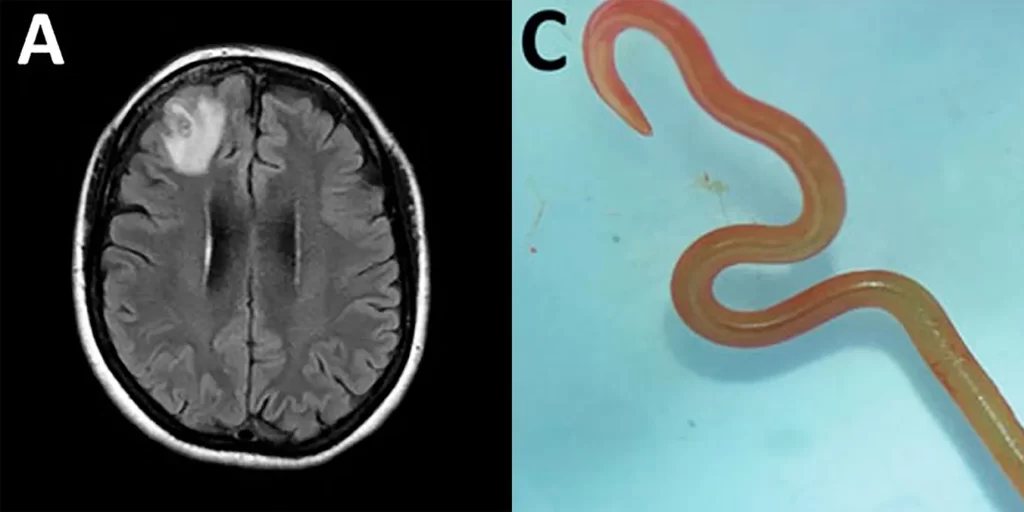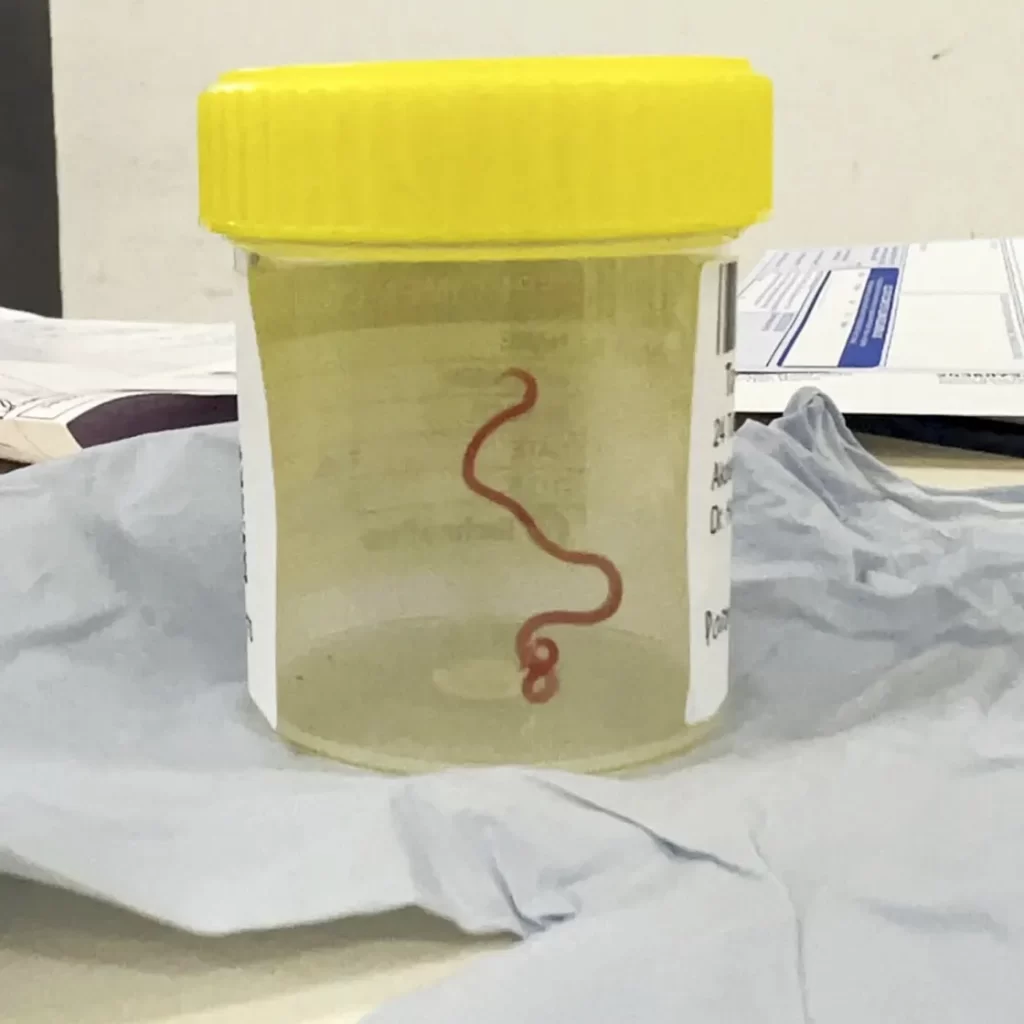In a stunning medical first, an Australian woman complaining of forgetfulness and depression was found to have a live 8-centimetre roundworm in her brain.
Usually found in pythons, the discovery has put the international medical community on high alert, prompting an intensive review of zoonotic diseases — illnesses transferred from animals to humans.
Troubling Journey to Diagnosis
The 64-year-old woman from south-eastern New South Wales was initially hospitalised for abdominal pain, diarrhoea, and a dry cough. Over time, she experienced escalating symptoms of forgetfulness and depression. An MRI scan revealed abnormalities in her brain, necessitating surgery.
Dr. Hari Priya Bandi, the attending neurosurgeon, couldn’t believe her eyes when she extracted a wriggling worm from the patient’s brain. Immediately, Dr. Sanjaya Senanayake, an infectious diseases physician, and other colleagues consulted for this incident. “I’ve only come across worms using my not-so-good gardening skills … I find them terrifying and this is not something I deal with at all,” Bandi told CNN In an interview in what is considered the first recorded incidence of a worm alive in a human brain.

Identifying the Intruder
Hospital experts scrambled to identify the parasitic roundworm. The hospital sent a sample to a nearby laboratory, where a scientist from the governmental scientific agency, CSIRO, identified the worm as Ophidascaris robertsi, a species typically found in pythons.
The discovery is not only a first for human cases but also represents the first known instance of the parasite infecting the brain of any mammalian species.

Possible Source of Infection
Although the patient had no direct contact with pythons, she resided near a lake inhabited by these reptiles. She regularly foraged for native leafy vegetables near the lake, which snake feces might have contaminated. The doctors believe either touching the contaminated greens or experiencing food cross-contamination infected the woman.
A Growing Threat
According to data from the US Centers for Disease Control and Prevention, approximately 75% of newly emerging infectious diseases are zoonotic. Senanayake emphasised the growing risk of zoonotic diseases, especially as human activities encroach further into animal habitats.
This recent discovery raises concerns about other parts of Asia where similar snake species live, indicating that more such cases may appear.
Medical Implications and Treatment
Because this was a first-of-its-kind case, physicians had to navigate carefully. There are no established protocols for treating humans infected with this specific parasite. Medications that kill parasites can cause inflammation, posing risks to sensitive organs like the brain.
Physicians are currently treating the patient for potential larvae in other parts of her body, including her liver and lungs. Senanayake reported that she continues to recover well and remains under active monitoring.
Practical Advice
The case has prompted doctors to advise caution when interacting with the environment, particularly for those who forage. To prevent potential zoonotic infections, experts recommend washing hands and cooking food properly.
Concluding Thoughts
This groundbreaking discovery is a stark reminder of the unforeseen medical challenges that could arise. This is especially so when humans and animals continue to share common habitats. Precaution and education are key in tackling the emergent threat of zoonotic diseases.
Photo credit: Nation World News, CDC.gov, Canberra Health

